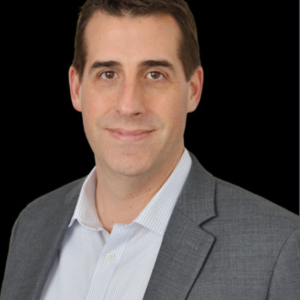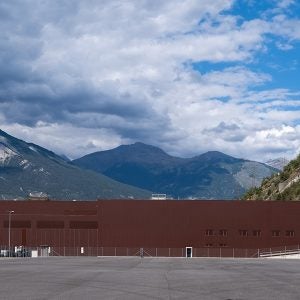Hydropower is experiencing a renaissance as the world looks to power economic development with reduced carbon emissions. Companies who want to profit from this, however, must appreciate local conditions and understand the geotechnical and regulatory risks involved, writes Serhat Demirel, Business Development Leader at Golder Associates, Turkey.
Emerging markets around the world face an immense growth in energy demands. Countries look to expand their hydropower capabilities, while companies want to take advantage of the opportunities this offers. In order to do so, however, a specific set of skills is needed. In particular, various key factors explored in this article are necessary to consider before embarking on hydro developments in locations with unexploited water resources.
It is also helpful to explore this energy demand within a geographical context. As a growing economy of increasing prominence, Turkey’s energy demand is expected to increase by more than 90% over the coming decade. The country has vast renewable energy potential and the government ambitiously aims to provide a third of demand from renewable sources by 2023. Notably, hydropower is now the country’s second largest domestic energy source after coal – and the capacity is quickly growing.
Key risks
In Turkey and elsewhere, the risks for water power projects range from geotechnical issues to environmental permit applications. These need to be addressed in order to succeed with a project. Importantly, many of these risks vary depending on whether operators are expanding existing facilities or starting projects in new areas.
When operators expand existing facilities, they must primarily be wary of the environmental impact of the expansion and the geotechnical and geologic characteristics at the expansion structures. Geotechnical conditions and climate will transform with time, and it is important to have a full view of the impact of changes in the catchment area, reservoir sedimentation and scour of rock downstream of the facilities. Regulations may also have changed since the initial facilities were built. Additionally, structural components will have aged and may have deteriorated.
When operators implement a new project, they must investigate all relevant geotechnical, hydrologic and environmental risks. These include the socio-economic and environmental impacts of the projects and the potential for impact on endangered species. Geological uncertainties, particularly in the dam foundations, tunnels and other underground works must also be analysed. Inadequate river flow records can further create problems. Other areas of concern include reservoir sedimentation and reservoir life, sediment transport and downstream impacts, regulatory and permitting requirements.
Balancing environmental, economic and social issues like this can be challenging, but emphasising sustainability throughout a project will leave all parties better off.
Geotechnical risks
The World Bank identifies geotechnical and geologic problems during construction as the main cause of cost inefficiency for hydropower projects. Cost inefficiency occurs when operators encounter faults, soft soils, high levels of groundwater or other adverse conditions during construction. It is therefore essential to develop a detailed understanding of the geological and geotechnical characteristics of the full structure of a hydro project before construction starts. The components that are most sensitive to geological uncertainties are the dam foundations, dam construction materials, tunnels, deep excavations, underground powerhouse caverns and powerhouse foundations.
An example of how geotechnical risks can be mitigated comes from the Fitzsimmons Hydro Power Project in Whistler, Canada. There, penstocks had to be shoe-horned into an exceptionally narrow corridor between the bobsleigh track for the 2010 Olympics and a steep, unstable slope down to Fitzsimmons Creek. The bobsleigh track was under construction at the same time as the hydro project – and both projects had to be completed in time for the 2010 Olympic Games. Golder employed several unusual slope stabilization measures to prevent settlement of the bobsleigh track and ensure the stability of the penstock. These included using micropiles and high-capacity anchors to provide stabilizing forces for the pipe and anchor blocks – and lightweight cellular concrete as backfill around the pipe to minimize the surcharge loading at the top of the steep slope.
Another significant geotechnical risk is the potential for scour downstream of spillways. This can impact on the stability of the spillway, and, possibly, the dam of hydro projects. To address the issue, George Annandale, a Principal at Golder, developed the erodibility index method of evaluating scour. This is now recognised in the industry as the best tool available for evaluating the potential for erosion around structures and scour downstream of spillways. The method relates stream power, a proxy representing the relative magnitude of the erosive capacity of water, to the erodibility index, which represents the relative ability of rock to resist the erosive capacity of water. It can be used to quantify the erodibility of any earth material, including rock formations, and to quantify the anticipated extent of scour.
Environmental risks
When it comes to environmental risks, hydropower projects are usually considered less dangerous than many other power sources. However, the possibility of finding endangered species at the site or the potential for socio-economic impacts still pose significant risks to a project. Developers must assess the impact on ecosystems and wildlife along rivers and lakes in permitting processes and get buy-in from all stakeholders.
Resources that may be adversely affected by hydropower are agricultural and silvicultural land, wildlife, fish habitats and recreational areas. The value of hydropower as a renewable energy resource compared with the potential impacts on these resources is very complex and varies considerably by region throughout the world.
Four factors largely decide the environmental impact of a project: The size and flow rate of the water source; the climate in the operations area; the size and design of the project; and potential cumulative effects of other projects located upstream or downstream of the operations. Environmental effects are, importantly, different every time and must be evaluated on a case-by-case basis.
To mitigate potential environmental impact, operators must control water levels and flow regimes upstream and downstream of the intake and tail race, along with the pathways for routing water through and around powerhouses. Storage reservoirs, however, can lead to thermal stratification and segregation by specific pathways of water routing. Reservoirs can also affect sediment transport and depositions, which can contribute to low dissolved oxygen levels and alter water quality. Another problem is that changes in water temperature and water quality can occur.
If operators are aware of all of these environmental issues, and the permitting processes surrounding them, they will be much better equipped to undertake hydropower operations.
Regulatory risks
Without sufficient oversight, on the other hand, developers may not acquire regulatory approval. To gain permits, hydroelectric projects must meet the requirements of all affected parties, primarily through Environmental Impact Statements (EIS) and Environmental Impact Assessments (EIA). Golder provides Environmental and Social Impact Assessment (ESIA) services worldwide for private and public sector projects in many client sectors. By evaluating potential effects of projects we are able to develop protection, mitigation and enhancement strategies to help clients address impacts to ecosystems and resources.
Golder’s approach optimises ESIAs by facilitating the interactions between clients, regulators, other stakeholders and technical specialists. Combined with experience in successfully navigating host-country and international ESIA protocols, the approach creates a transparent process that focuses on the most critical issues. With potential impacts identified early and, where possible, avoided or mitigated through feedback to project design, the chances of success are much greater. This focused approach gives operators more predictable project schedules and cost estimates, and is a good way of minimising the risk of regulatory hold-ups.
Social Risks
The social risks of hydropower projects tend to be greater than for other power projects because of the impact water sources has on people’s lives. If the construction of a hydropower plant starts without sufficient local engagement, opposition is therefore highly probable.
Local citizens and authorities need to be involved from the very beginning in the feasibility and pre-construction phases. Current Turkish legislation, however, does not directly manage this early phase of hydropower projects. This has created confidence issues among operators, local authorities and citizens whose livelihood depend on the rivers. It is essential not to start construction until the concerns and complaints of local citizens are well managed.
One of the most important social impacts of hydropower projects in Turkey is migration. With agricultural areas near water sources becoming expropriated and the water sources becoming insufficient, the primary income source for people in rural areas is affected. This leads to increased migration to urban centres. Operators and authorities need to take precautions to mitigate this impact.
Another important social risk for hydropower projects is insufficient local recruitment. Projects lead to many job opportunities for unskilled and semiskilled workers. If operators cannot conduct a non-discriminatory, transparent and fair recruitment processes during local employment campaign, unfavourable social risks are inevitable.
All hydropower projects need local engagement from the very beginning to mitigate social risks and opposition.
Beyond Turkey
As hydropower becomes an increasingly central energy source around the world, understanding the risks involved in hydro projects becomes an ever more sought-after skill. The Turkish scene is a good illustration of the dynamics involved in this process. It shows that, with the opening up of the power market to private developers, companies with access to knowledge of local regulations and geological conditions get a head start in the race to take advantage of water power.
Golder Associates is an employee-owned, global organisation providing consulting, design and construction services in the specialist areas of earth, environment, and energy. Golder has been working in Turkey for more than twenty years, long before the company had an office in the country. Golder’s Turkish office was established in 2006 and its early focus was on Environmental Impact Assessments. It has now expanded its technical services to diversify its business: Golder currently works with many clients in the mining, oil and gas, manufacturing and power industry in Turkey and provides services for the whole project life cycle. Over the past years, the Turkey office has increased its local capabilities in Environmental and Social Impact Assessments, hydrology-hydrogeology, geotechnical engineering and engineering design studies. Golder in Turkey also works closely with the company’s global offices and uses their international experience to bring global expertise to the local market. Today, Golder has 20 employees in Turkey; they are predominately environmental and geological engineers.






